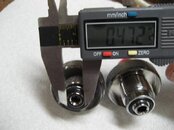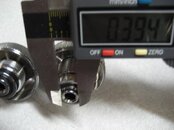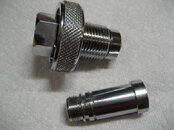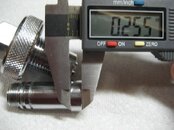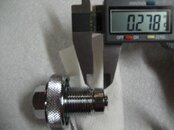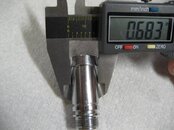I assume you have tried new O rings and such. Looking at the theory of how it seals there should be no way it cannot, unless as you say the thread has an issue. And yes I would not play with recutting the threads. If they are cut incorrectly, the reg could become a missile at 200 BAR.
Is the head piece not parallel perhaps? Thus adding an extra O ring allows more tolerance for this?
Are you sure its not the tank thread? Perhaps a fault there or have you tried a number of tanks?
Is the head piece not parallel perhaps? Thus adding an extra O ring allows more tolerance for this?
Are you sure its not the tank thread? Perhaps a fault there or have you tried a number of tanks?



